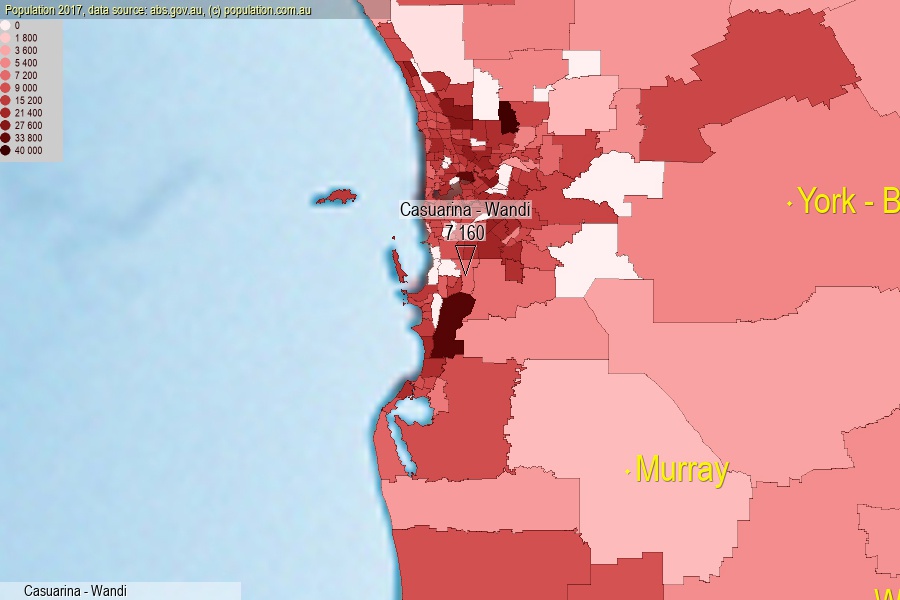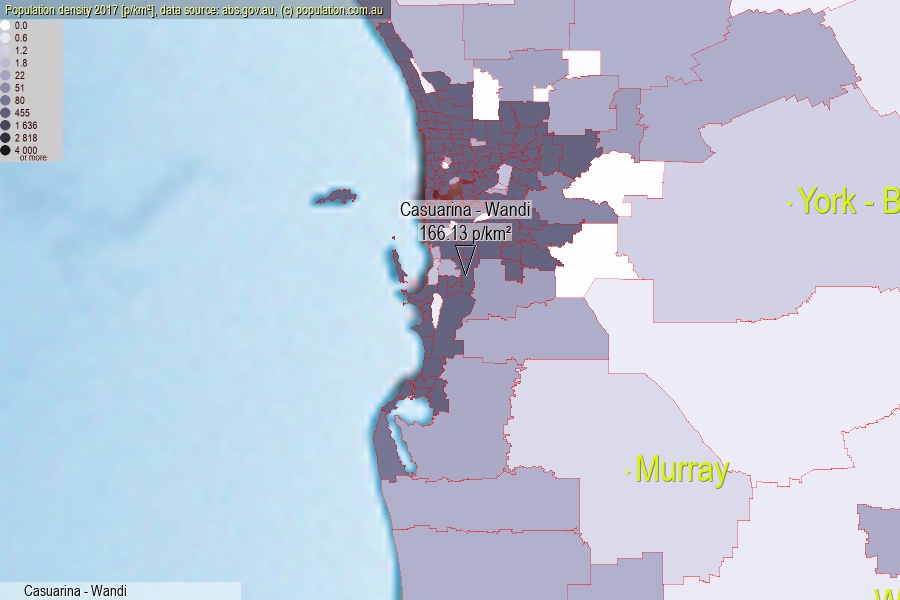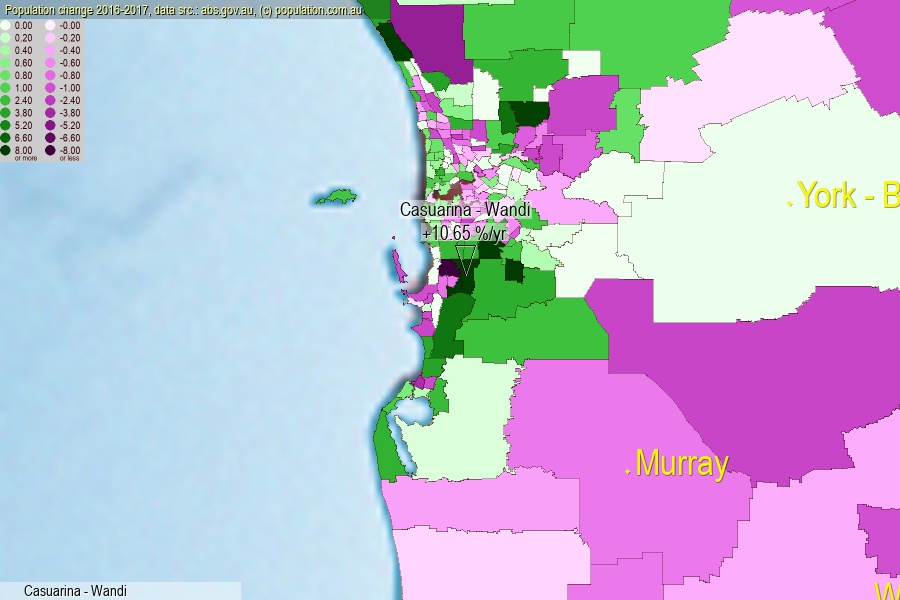 population.com.au
population.com.auLast official estimated population of Casuarina - Wandi (as Statistical Area Level 2) was 7 160 people (on 2017-06-30)[2]. This was 0.03% of total Australian population and 0.276% of WA population. Area of Casuarina - Wandi is 43.10 km², in this year population density was 166.13 p/km² . If population growth rate would be same as in period 2016-2017 (+10.65%/yr), Casuarina - Wandi population in 2025 would be 16 086. [0]



Click to enlarge. Casuarina - Wandi is located in the center of the images.
Population [people], population density [p./km²] and population change [%/year] [2]
View borders » (new window) [4]
[2001-2002] -0.21 %/Yr.
[2002-2003] +1.69 %/Yr.
[2003-2004] +1.25 %/Yr.
[2004-2005] +1.61 %/Yr.
[2005-2006] +0.79 %/Yr.
[2006-2007] +0.20 %/Yr.
[2007-2008] +1.44 %/Yr.
[2008-2009] +1.86 %/Yr.
[2009-2010] +1.04 %/Yr.
[2010-2011] +2.31 %/Yr.
[2011-2012] +18.56 %/Yr.
[2012-2013] +17.92 %/Yr.
[2013-2014] +12.49 %/Yr.
[2014-2015] +10.85 %/Yr.
[2015-2016] +13.33 %/Yr.
[2016-2017] +10.65 %/Yr.
[0] Calculated with linear interpolation from officially estimated population
[1] Read more about SA2 and Australian Statistical Geography Standard (ASGS) on abs.gov.au
[2] Population data from Australian Bureau of Statistics (Population and density: 2017; change: 2016-2017)
[3] Digital Boundaries: Australian Statistical Geography Standard (ASGS) 2016.
[4] Border coordinates are simplifyed using Ramer-Douglas-Peucker algorithm.